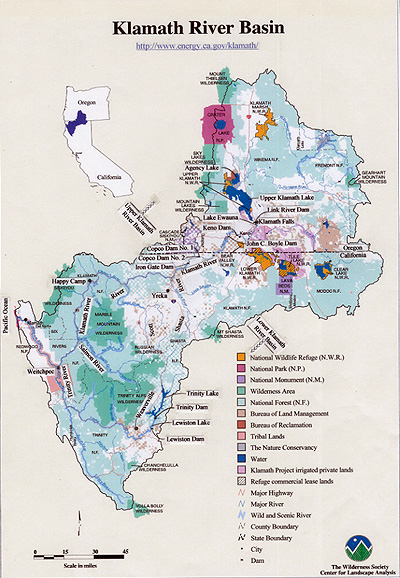| SEPTEMBER 11, 2011 |
 |
 |
|
|
|
|
An interview with 'REX' |
|
http://www.PieNPolitics.com
|
|
|
|
Today's guest:
REX - A Klamath Basin Resident |
|
About REX: |
 |
|
|
Rex unfortunately cannot identify himself, but on this show
he will expose the flawed science and rationale behind the "Klamath Basin Restoration Agreement (KBRA)".
|
|
 |
|
Image of the
endangered Klamath Coho Salmon |
|
|
|
|
NOTE THAT THE DAM
REMOVAL OPPOSITION STATES: Coho Salmon
can only travel as far as they do because of the dams. So
really, the Coho salmon will not benefit with dam removal.
Removing the dams will make it much harder for the salmon to
travel upstream. Please listen to the following radio clips.
The links below will
activate your player so do not click while program is
broadcasting. |
|
|
|
Listen - interview
from My Outdoor Buddy Radio 1460 AM |
|
►Click
here for audio: Liz Bowen gives her argument against the removal
of 4 Siskiyou County Dams. |
|
|
|
Sat.
Mornings 6 - 7 AM
www.myoutdoorbuddy.com
|
|
►Click here for audio: Hear John Menke
(ecologist) give his historical and environmental analogy of
Coho Salmon as a reason to remove these dams. |
|
|
|
Frank
Galusha 'MyOutdoorBuddy.com' over Dam Issues |
|
►Click here for audio: Bott of KCNR 1460 Radio interviews
Frank Galusha 'MyOutdoorBuddy.com about Scott River Valley Coho and the ESA. |
|
|
|
►Latest
Outdoor Buddy interview with Rex, our guest two weeks ago: |
|
|
|
KLAMATH
RIVER BASIN MAP |
|
 |
|
Click on Map for a
larger view. REF:http://www.energy.ca.gov/klamath/
|
|
|
|
Scientists find
holes in Klamath River dam removal plan |
|
June 25, 2011 - By Bettina
Boxall,
Los Angeles Times |
|
Click here to read full
Los Angeles Times story. |
|
|
|
$1.4-billion project — dismantling four
hydroelectric dams to restore Chinook salmon runs in the upper
Klamath River — amounts to an experiment with no guarantee of
success, independent report says. |
|
|
|
A $1.4-billion project to remove four
hydroelectric dams and
restore habitat to return Chinook salmon to the upper reaches of
the Klamath River amounts to an experiment with no guarantee of
success, an independent science review has concluded.
A panel of experts evaluating the proposal
expressed "strong reservations" that the effort could overcome
the many environmental pressures that have driven the dramatic
decline of what was one of the richest salmon rivers in the
nation.
|
|
|
|
|
Even after the decommission of dams that have for decades
blocked migrating salmon, the panel said, biologists would
probably have to truck the fish around a stretch of the river
plagued by low oxygen levels.
"I think
there's no way in hell they're going to solve" the basin's
water-quality problems, said Wim Kimmerer, an environmental
research professor at San Francisco State, one of six experts
who reviewed the plan. "It doesn't seem to me like they've
thought about the big picture very much." |
|
|
|
Over the last
century, the Klamath's waters have been diverted for irrigation,
polluted by runoff and dammed for hydropower. The number of
fall-run Chinook that swim up the river and its tributaries to
spawn has in some years amounted to fewer than 20,000, compared
to historic populations of half a million.
The plummeting levels of
native fish have pitted farmers against environmentalists and
tribes whose traditional cultures and diets revolved around
salmon fishing.
Many of the warring parties last year signed two agreements
intended to bring peace to the river, which winds from southern
Oregon through the Cascade and Coast ranges to California's
Pacific Coast
One of the pacts calls for
the removal, starting in 2020, of four hydropower dams operated
by PacifiCorp, a subsidiary of billionaire Warren Buffett's
Berkshire Hathaway empire. The other includes fishery
restoration programs as well as promises of a certain level of
water deliveries to Klamath basin farmers and two wildlife
refuges that are important stopovers for migrating birds.
The dam removal must still be approved by Congress and the U.S.
secretary of the Interior, who will rely on reviews by the
independent panel, federal agencies and others to determine if
the decommissioning is in the public interest. |
|
|
|
The scientists'
June 13 report describes
the proposals as a "major step forward" that could boost the
salmon population by about 10% in parts of the upper basin. But
to achieve that, the panel cautions, the project must tackle
vexing problems, including poor water quality and fish disease.
Read full
Los Angeles Times
story.
bettina.boxall@latimes.com
|
|
Dam removal will do
more harm than good |
|
REFERENCE:
PIE N
POLITICS and
also appears in the
Redding Searchlight: |
|
http://pienpolitics.com/?p=4637 |
|
http://www.redding.com/news/2011/jun/13/
opinion J. Menke |
|
|
|
Removal of four Klamath
River dams as proposed in the Klamath Hydroelectric Settlement
Agreement and and the Klamath Basin Restoration Agreement likely
will result in undesirable and unintended consequences that
collectively add up to negative cost-benefit outcomes using
scientific, engineering, economic, and Native American cultural
criteria. Surprisingly, the fishery faces the greatest risk of
all, and the agencies responsible for promoting dam removal do
not appear to care. |
|
|
|
First and foremost, the
dams provide flood protection (minimum 9-hour peak-flood delay)
for small communities, residences, businesses, agency offices,
bridges and other structures along the Klamath River downstream
from Iron Gate Dam to the ocean. Additionally, the reservoirs
provide local water supplies to helicopters used in fighting
wildland fires. Reservoirs also provide sufficient water in the
mainstem Klamath to support the fall run of chinook salmon.
Property values adjacent to dam reservoirs have declined
precipitously, and property tax reductions will reduce funds for
Siskiyou County programs. |
|
|
|
Read full story:
http://www.redding.com/news/2011/jun/13/ |
|
|
|
Websites and
material mentioned on
today's program: |
|
Environmental Protection Agency
|
|
Department of the Interior report |
|
Klamath River Basin Conservation Area
Restoration Program |
|
AGREEMENTS (PDF):
KBRA
KSHA |
|
More websites related to
Klamath River Basin |
|
http://sciencepolicy.colorado.edu/klamathbasin/science_analysis/
|
|
http://www.klamathforestalliance.org/ |
|
http://waterwatch.org |
|
http://klamathriverrestoration.org/kbra-summary.html |
|
|
|
|
|
|